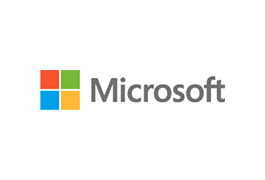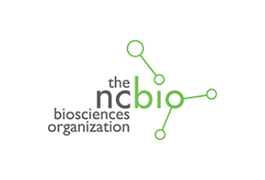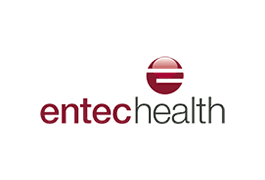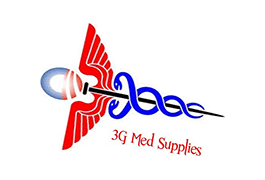Nursing home can prove high quality wound care
An independent nursing home in Newport, RI, uses Silhouette® to help prove the quality of their care, and use the information they gather to guide the best clinical outcomes and provide pressure ulcer surveillance.
St Clare-Newport, RI, is a not-for-profit skilled nursing facility caring for 47 elders. It has about 80 staff, including a wound care team of 5. The home is expanding to 60 skilled bed capacity, adding an adult day care program and introducing a “small house” model.
The nursing team is led by Director of Nursing, Linda Peckham, who has been a long term care nurse and administrator for 35 years. She has been in her current role for 10 years.
St Clare’s wound management challenge
Because St Clare is a nursing home, a significant number of its elderly patients are at risk of developing pressure ulcers, skin tears and Kennedy Terminal Ulcers, which appear at the end of life. Like other health care settings, there is also a risk of infections such as MRSA that are increasingly associated with wounds.
St Clare Home has a five-star quality rating. Its pressure ulcer management program has shown outstanding results, with a pressure ulcer incidence of 1% (compared with a national average of 6%), and currently showing no pressure ulcers that are new or worsened (compared with a national average of 2%).
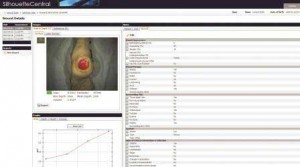
Powerful informatics capability transforms wound-related communication and enables holistic and insightful decision-making.
For St Clare, wounds are not simply unfortunate co-morbidities but are regarded as complex chronic conditions with multiple consequences that justify a comprehensive, chronic disease management / wellbeing approach.
St Clare’s nursing team is recognized for excellent wound care and preventative measures. They have had many cases of patients being admitted with serious wounds and through the efforts of St Clare’s team these wounds have healed. Their philosophy is first to prevent ulcers based on careful risk assessment and – where wounds are present – commit to their healing.
“We do a lot of preventative care – air mattresses, special surfaces for wheelchairs. If someone’s skin shows a reddened area we intervene,” says Ms Peckham.
But effective wound care relies not only on high quality clinical judgement and effective treatment, it also requires documentation that can prove the quality of care that was delivered and provide invaluable information for decision-making and communication.
The search for a solution
Ms Peckham sought to equip her team with better wound assessment tools.
At first, she looked to cameras for the pictorial evidence that could support clinical judgements, believing “a picture tells a thousand words” and is therefore essential for effective wound documentation. She searched for an imaging solution that could be integrated into St Clare’s wound clinic’s practices, including standard digital cameras and digital planimetry, which calculates the area of wounds based on the number of pixels in the image.
Her quest spanned more than five years, in which she attempted six digital camera options. None provided the objectivity Ms Peckham was seeking, and all had procedural and quality drawbacks that left the core issues unaddressed. These included process issues such as the need to upload files, the risk of uploading the wrong image to the wrong patient, and lighting and camera angle distortions.
Wound imaging and 3D measurement
The system proved its value so comprehensively that St Clare’s leadership team decided to purchase it outright using existing operating funds
Ms Peckham first read about Silhouette in a trade magazine. Silhouette is a wound imaging, measurement and documentation system providing accurate information at the point of care and supporting the clinical management of wounds.
The Silhouette wound assessment system incorporates a point of care imaging device that uses laser triangulation to create a 3D model of each wound, accurately measuring the area, depth and volume, precisely mapping their healing progress and recording other essential data to provide an objective and complete record of assessment.
The results are stored in the SilhouetteCentral™ database, which enables wound surveillance by any authorized person using a secure Internet connection from inside or outside the facility.
Ms Peckham set up a Silhouette pilot program while seeking a funding partner but the system proved its value so comprehensively that St Clare’s leadership team decided to purchase it outright using existing operating funds.
Silhouette is installed on a treatment cart with a laptop. St Clare nurses use SilhouetteStar to image and measure all wounds. The wounds are monitored at every shift, and images are taken weekly to document a comprehensive history of each wound’s activity. The data are synced to SilhouetteCentral so that physicians at other facilities to which St Clare patients are transferred can review the wound history.
“It has taken some nurses a little while to get used to it, as they were not used to using a computer,” says Ms Peckham. “It’s nice to be able to take it into each room – it makes it easy for nurses to incorporate this new way of working into routine patient interaction. They are very comfortable now with the Silhouette system.”
Communication
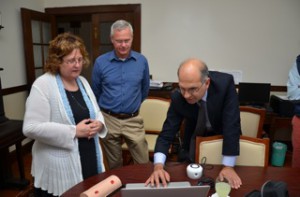
ARANZ Medical CEO Dr Bruce Davey demonstrates Silhouette to St Clare Director of Nursing Linda Peckham and Chief Medical Officer Donald A. Derolf, M.D.. Click the photo to view a video demonstration of Silhouette.
The immediate benefit has been to provide trustworthy, objective wound information that can be easily communicated across care settings.
St Clare’s wound team meetings refer to Silhouette reports showing the healing progression of problem wounds, providing objective information that supports the development of care strategies.
The precise healing trend data gives staff early warning if wounds are not showing appropriate healing behaviour. “Right away we know if it’s getting better or worse, whereas before we used to have three nurses and three different stories in the documentation,” she says.
Nursing homes typically struggle to get access to expert opinions without unnecessarily transporting the patient, exposing them to further risk and incurring extra cost. Now, physicians at other facilities can log on to SilhouetteCentral’s secure database using a weblink, to remotely monitor and review wounds enabling them to “teleconsult” and quickly determine the best clinical action.
Silhouette is also useful for patient and family communication, providing an easy-to-follow summary of the progress of wounds.
Risk mitigation
Ms Peckham says Silhouette has helped St Clare to mitigate wound-related risks such as pressure ulcers. It has also addressed risks associated with the traditional wound measurement method of calculating depth by inserting a sterile Q-tip into the wound, an invasive, uncomfortable and potentially infectious practice. Silhouette is easy to disinfect between assessments, and involves no patient contact.
Silhouette has enabled nurses to quickly and thoroughly assess patients on admission and discharge to check for wounds, and perform weekly patient assessments.
“If a pressure ulcer occurs at St Clare due to poor care, I will take responsibility for that,” says Ms Peckham. But other types of wounds happen in long-term care facilities, many non-preventable. “You don’t want those on your Minimum Data Set – and by using Silhouette you have the data to differentiate the preventable from the non-preventable.”
“You have to be able to prove [a wound] was not the result of negligence. You have to prove that the patient received a certain standard of care and prove the outcomes.”
She says it is easy to accuse nursing homes of causing hospital-acquired pressure ulcers. “But if the patient has been in a hospital emergency room for two days, they can quickly deteriorate before they are returned to us. So we always image them using Silhouette prior to their leaving us, and as soon as they come back.”
Kennedy Terminal Ulcers can be part of the end-of-life process and inevitable organ failure. Ms Peckham cites the example of a 104-year-old patient who developed a Kennedy Terminal Ulcer two weeks before she died. “I don’t want her family to see the development of an ulcer as negligence. It was a symptom of organ failure – the organ being the skin. The pictures from Silhouette help us to demonstrate this type of process.”
Documentation
Silhouette information assists St Clare to file with CMS the 38-page Minimum Data Set (MDS 3.0) and Continuity Assessment Record & Evaluation (CARE) reports for each patient, which are required to determine reimbursement.
The system supports high quality audit documentation. Surveyors from the Rhode Island Department of Health look at policies and procedures and at outcomes, and Silhouette data provides ready evidence that an acceptable standard of wound care has been provided.
Silhouette also helps St Clare to evidence its management of the controversial “3 day rule”. If severe wounds are present, the patient may qualify for up to 100 hours of reimbursed skilled supervision, 24 hours a day – known as post-acute Medicare Part A (or skilled) benefits. If their symptoms are less severe, they may only be treated on an outpatient basis under observation for less than three days, without skilled benefits. Silhouette gives St Clare the confidence that it can justify any wound-related decision to admit the patient so they can receive skilled benefits.
Creating value in wound management
Ms Peckham has long recognized that it is difficult to achieve quality documentation using traditional methods. “I have always been aware that in long term care, documentation is everything,” she says. Traditional wound documentation was very subjective, reflecting different approaches depending on how staff had been trained.
With Silhouette, St Clare has achieved a quantum improvement in its documentation of wounds. Patient discomfort and infection risk have been reduced, there is better wound-related communication, and St Clare has confidence in its ability to prove an outstanding standard of wound care.
Wounds are important because they are a bellwether of the patient’s overall health. “You have to look at the whole person to understand if it is a result of pressure, or a result of the decline of a person’s whole system,” says Ms Peckham.
Silhouette has actively contributed to an improvement in St Clare’s wound outcomes: “Silhouette impacts how we give care. It allows more objective data for decisions, reduces pain and infection for residents – all those things.”

